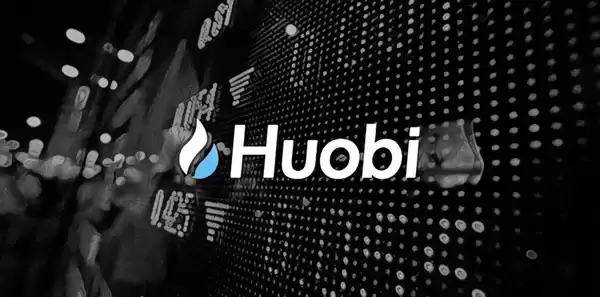-
 Bitcoin
Bitcoin $117800
0.49% -
 Ethereum
Ethereum $4432
0.55% -
 XRP
XRP $3.106
1.07% -
 Tether USDt
Tether USDt $1.001
0.01% -
 BNB
BNB $835.8
1.74% -
 Solana
Solana $189.1
2.72% -
 USDC
USDC $0.9999
-0.01% -
 Dogecoin
Dogecoin $0.2302
3.65% -
 TRON
TRON $0.3485
-0.69% -
 Cardano
Cardano $0.9212
-0.91% -
 Hyperliquid
Hyperliquid $46.97
1.45% -
 Chainlink
Chainlink $22.77
5.61% -
 Stellar
Stellar $0.4284
0.82% -
 Sui
Sui $3.766
2.82% -
 Bitcoin Cash
Bitcoin Cash $583.5
-0.82% -
 Ethena USDe
Ethena USDe $1.001
0.03% -
 Hedera
Hedera $0.2512
2.78% -
 Avalanche
Avalanche $24.18
2.27% -
 Litecoin
Litecoin $120.2
2.10% -
 Toncoin
Toncoin $3.450
1.96% -
 UNUS SED LEO
UNUS SED LEO $9.412
-0.92% -
 Shiba Inu
Shiba Inu $0.00001298
2.35% -
 Uniswap
Uniswap $10.99
3.75% -
 Polkadot
Polkadot $3.962
3.09% -
 Dai
Dai $1.000
0.00% -
 Bitget Token
Bitget Token $4.643
1.38% -
 Cronos
Cronos $0.1511
-0.08% -
 Ethena
Ethena $0.7246
3.18% -
 Monero
Monero $254.9
7.90% -
 Pepe
Pepe $0.00001100
3.32%
How much is the Huobi contract fee
By understanding the fee structure of Huobi's contract trading options, traders can optimize their profitability and tailor their trading strategies accordingly.
Nov 22, 2024 at 10:51 am

Huobi Contract Fee Structure: A Comprehensive Guide
Huobi, a leading cryptocurrency exchange, offers a range of contract trading options to its users. Understanding the fee structure associated with contract trading on Huobi is crucial for traders to optimize their profitability. This article provides a comprehensive overview of Huobi's contract fees, answering common questions and outlining the various components that make up the overall fee structure.
1. Trading Fees
- Maker Fees: Makers, who add liquidity to the market by placing limit orders, receive a rebate on their trading fees. The maker fee for perpetual contracts is 0.02% and for futures contracts, it is 0.01%.
- Taker Fees: Takers, who remove liquidity from the market by executing market orders, pay a slightly higher fee. The taker fee for perpetual contracts is 0.03% and for futures contracts, it is 0.02%.
2. Funding Fees
- Perpetual contracts employ a funding fee mechanism to maintain price parity with their underlying assets. The funding rate, which can be positive or negative, is charged every 8 hours. If the funding rate is positive, long positions pay short positions, and vice versa. The funding rate for Huobi's perpetual contracts is calculated based on the interest rate differential between the contract and its underlying asset, as well as market supply and demand.
3. Margin Fees
- Margin trading allows traders to leverage their position, effectively increasing their potential profits and losses. When using margin, traders borrow funds from Huobi and pay an interest fee on the borrowed amount. The margin fee for perpetual contracts is 0.05% per day, while the fee for futures contracts varies depending on the contract period.
4. Insurance Fund Fees
- The insurance fund protects against potential losses incurred by traders in the event of liquidation. A small percentage of trading fees (0.02%) is allocated to the insurance fund. When closing a position, traders contribute to the insurance fund if they have realized a profit. The fees charged are used to compensate traders who suffer losses due to liquidations.
5. Deposit and Withdrawal Fees
- Huobi charges a deposit fee for some cryptocurrencies, while deposits made in Huobi Token (HT) are typically fee-free. Withdrawal fees vary depending on the cryptocurrency being withdrawn. It is recommended to check the latest fee schedule on the Huobi website.
6. Other Fees
- Settlement Fee: When a futures contract matures, traders are charged a settlement fee for liquidating their positions. The settlement fee is determined based on the contract's underlying asset and trading volume.
- Referral Fees: Traders who refer new users to Huobi can earn referral fees based on their referred users' trading volume. The referral rate is tiered, with higher rates for higher trading volumes.
Disclaimer:info@kdj.com
The information provided is not trading advice. kdj.com does not assume any responsibility for any investments made based on the information provided in this article. Cryptocurrencies are highly volatile and it is highly recommended that you invest with caution after thorough research!
If you believe that the content used on this website infringes your copyright, please contact us immediately (info@kdj.com) and we will delete it promptly.
- Kazakhstan's Crypto Leap: Bitcoin ETF and Central Asia's Digital Finance Future
- 2025-08-13 12:45:19
- BlockDAG Presale Blazes Past $371M: Fundraising Frenzy Fuels Crypto Sensation
- 2025-08-13 13:05:21
- Meme Coins: Chasing the 2025 Surge – Which Will Moonshot?
- 2025-08-13 10:25:23
- Bitcoin's Wild Ride: Rally, Pullback, and What's Next
- 2025-08-13 10:25:23
- Bitcoin, Bitmax, and Institutional Demand: A New Era of Crypto Investment
- 2025-08-13 10:45:12
- Solana, ROAM, and Airdrops: What's the Buzz in 2025?
- 2025-08-13 11:35:13
Related knowledge

Is it possible to adjust the leverage on an open position on KuCoin?
Aug 09,2025 at 08:21pm
Understanding Leverage in KuCoin Futures TradingLeverage in KuCoin Futures allows traders to amplify their exposure to price movements by borrowing fu...

What cryptocurrencies are supported as collateral on KuCoin Futures?
Aug 11,2025 at 04:21am
Overview of KuCoin Futures and Collateral MechanismKuCoin Futures is a derivatives trading platform that allows users to trade perpetual and delivery ...

What is the difference between realized and unrealized PNL on KuCoin?
Aug 09,2025 at 01:49am
Understanding Realized and Unrealized PNL on KuCoinWhen trading on KuCoin, especially in futures and perpetual contracts, understanding the distinctio...

What different order types are available to use on KuCoin Futures?
Aug 13,2025 at 11:35am
Understanding Order Types on KuCoin FuturesKuCoin Futures offers a comprehensive range of order types to accommodate different trading strategies and ...

How does KuCoin Futures compare against Binance Futures in terms of features?
Aug 09,2025 at 03:22am
Trading Interface and User ExperienceThe trading interface is a critical component when comparing KuCoin Futures and Binance Futures, as it directly i...

How can I manage risk when applying high leverage on KuCoin?
Aug 13,2025 at 11:35am
Understanding High Leverage and Its Implications on KuCoinHigh leverage in cryptocurrency trading allows users to control larger positions with a rela...

Is it possible to adjust the leverage on an open position on KuCoin?
Aug 09,2025 at 08:21pm
Understanding Leverage in KuCoin Futures TradingLeverage in KuCoin Futures allows traders to amplify their exposure to price movements by borrowing fu...

What cryptocurrencies are supported as collateral on KuCoin Futures?
Aug 11,2025 at 04:21am
Overview of KuCoin Futures and Collateral MechanismKuCoin Futures is a derivatives trading platform that allows users to trade perpetual and delivery ...

What is the difference between realized and unrealized PNL on KuCoin?
Aug 09,2025 at 01:49am
Understanding Realized and Unrealized PNL on KuCoinWhen trading on KuCoin, especially in futures and perpetual contracts, understanding the distinctio...

What different order types are available to use on KuCoin Futures?
Aug 13,2025 at 11:35am
Understanding Order Types on KuCoin FuturesKuCoin Futures offers a comprehensive range of order types to accommodate different trading strategies and ...

How does KuCoin Futures compare against Binance Futures in terms of features?
Aug 09,2025 at 03:22am
Trading Interface and User ExperienceThe trading interface is a critical component when comparing KuCoin Futures and Binance Futures, as it directly i...

How can I manage risk when applying high leverage on KuCoin?
Aug 13,2025 at 11:35am
Understanding High Leverage and Its Implications on KuCoinHigh leverage in cryptocurrency trading allows users to control larger positions with a rela...
See all articles

























































































